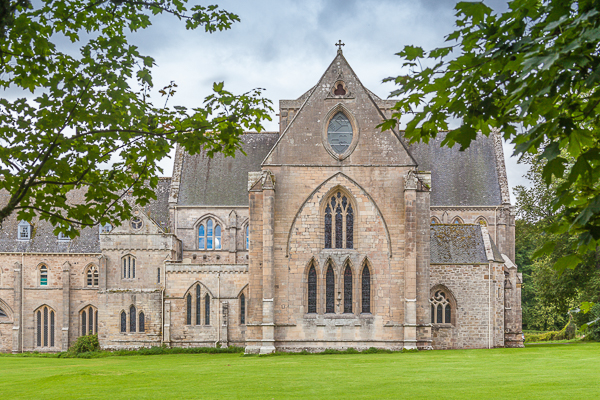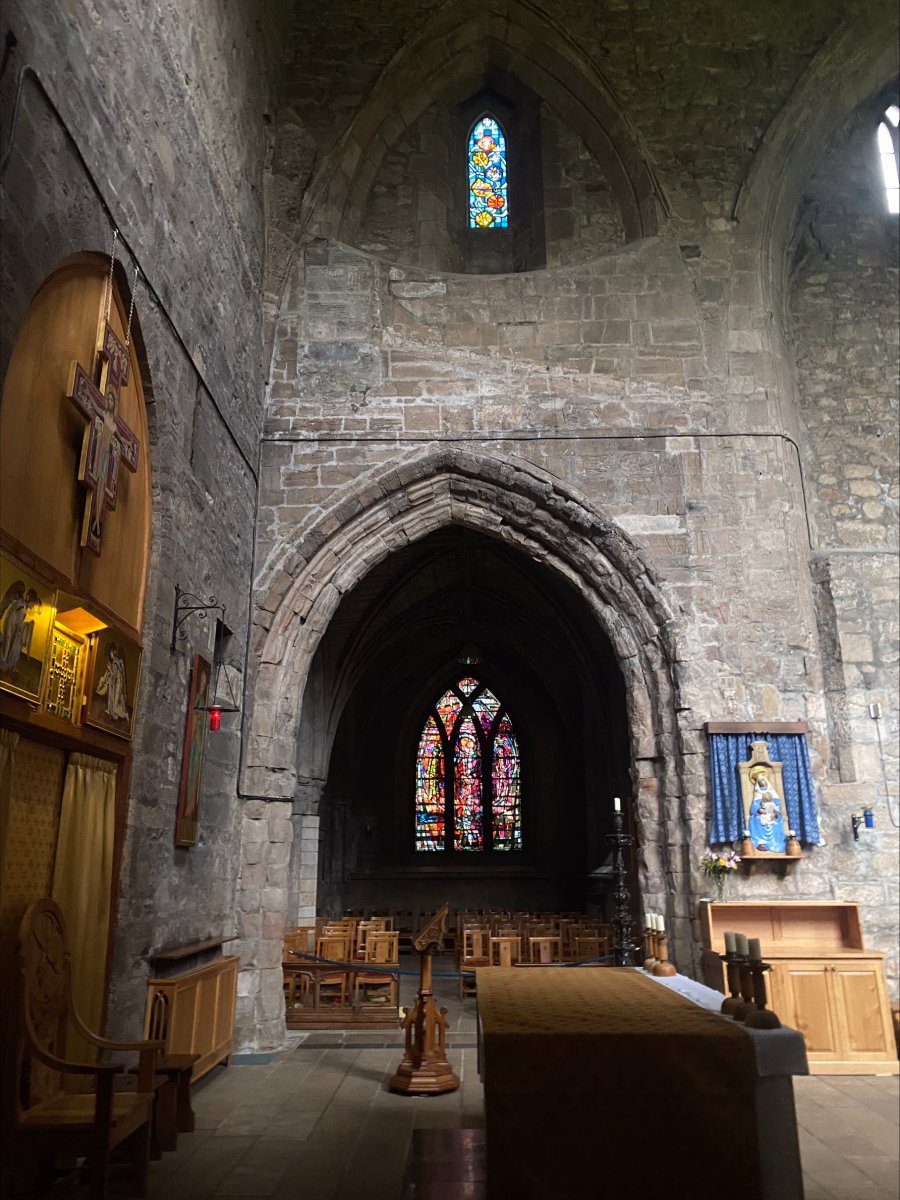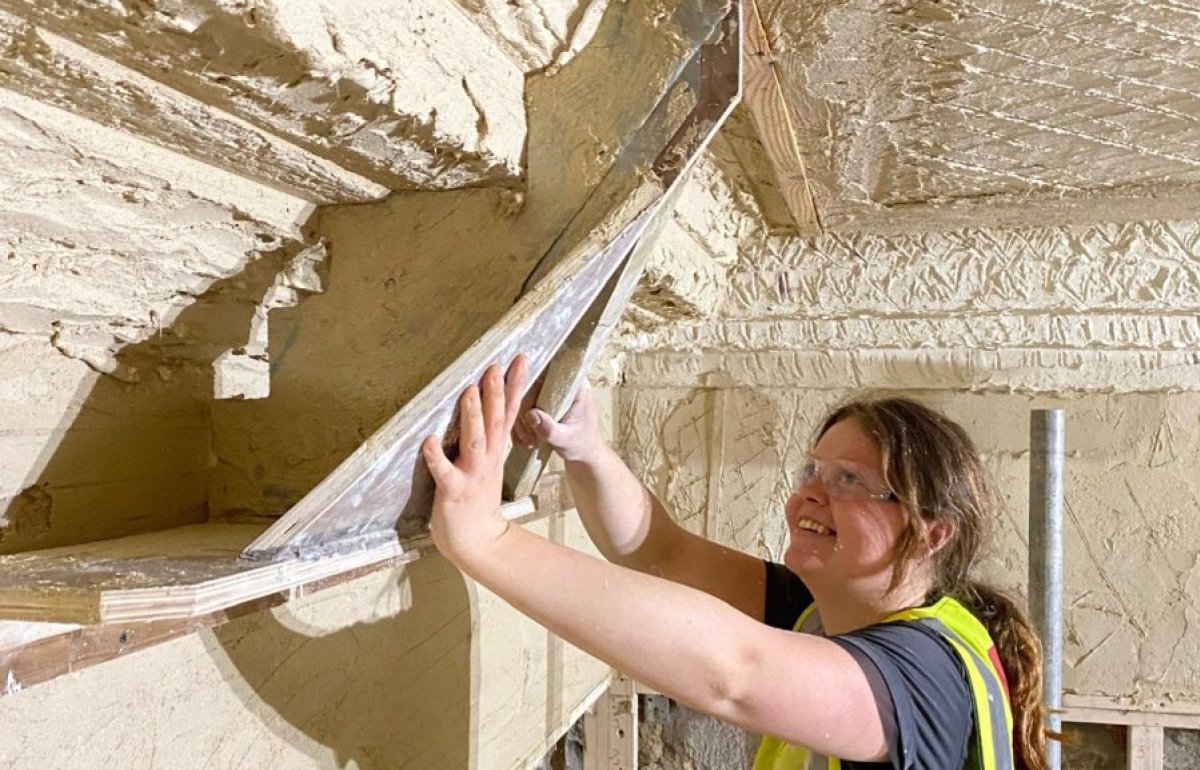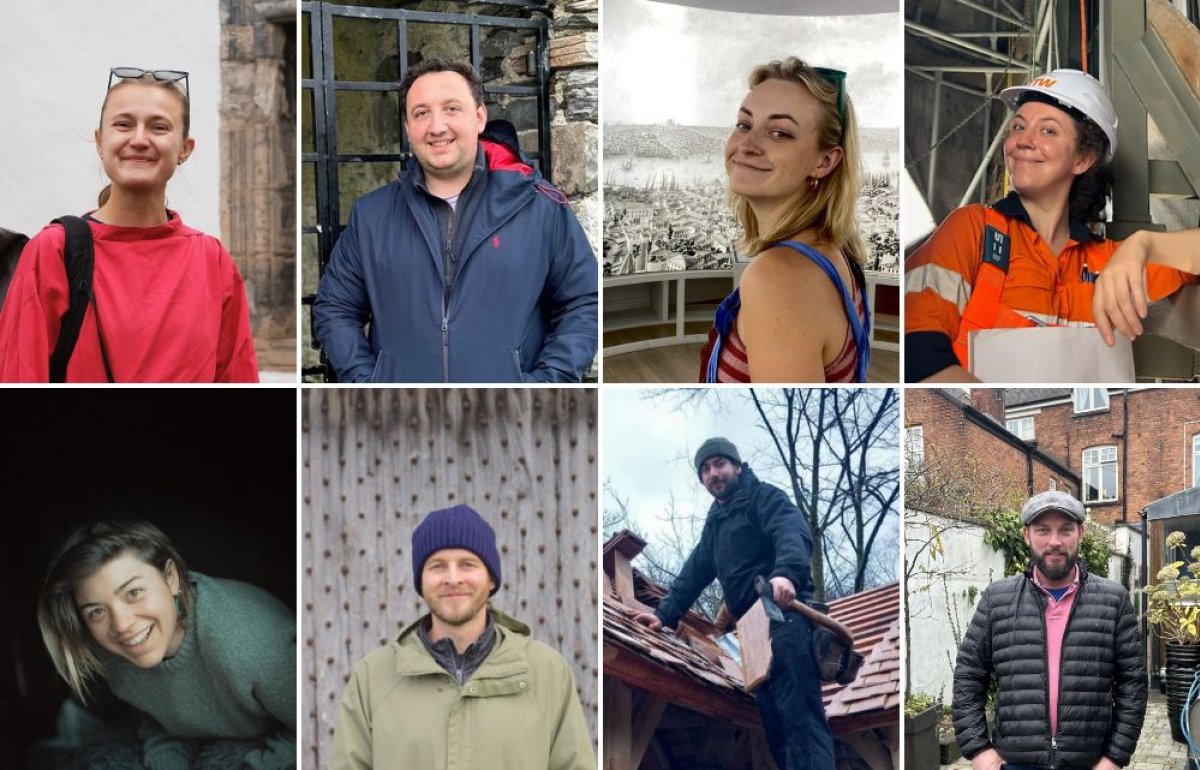SPAB Fellows: Balancing Preservation and Innovation at Pluscarden Abbey
Share on:
Stonemason and SPAB Fellow Jack Buchanan describes a visit to Pluscarden Abbey, where reverence for the past, coupled with a willingness to adapt and repurpose, creates a harmonious coexistence between the ancient ruins and a vibrant, living community.
As we come to the end of our third and final block of the Fellowship, I’ve had time to reflect on what’s been an amazing year so far. I had no idea how profoundly it would impact my perspective on the crafts, conservation, and architecture.
Over the course of this unique experience, we’ve been exposed to a variety of opinions on the conservation spectrum — from the purists to the non-conformists. Our differing approach to repair as craftspeople can often lead to confusion and gentle disagreement, and sometimes we see things that makes us question our principles. This was highlighted on a recent visit to Pluscarden Abbey, where I had the opportunity to see the works that have seen the abbey brought back into use.
Nestled in the northeast Highlands, it’s easy to see why an abbey was founded here in 13th century. Pluscarden Abbey has weathered centuries of change, enduring the tumultuous events of history. Having laid dormant for centuries, the priory came back into the hands of Benedictine monks in the 1940s. Living a life of contemplation and prayer, they found themselves surrounded by the crumbling walls and dilapidated structures that once stood as symbols of faith.

Pluscarden Abbey. © Osnuya
To arrest the decay, the monks embraced a pragmatic philosophy, seeing in the ruins an opportunity for renewal. Indeed, within seven years the church’s bell tower had been re-roofed.
The abbey’s overhaul is characterised by a careful balance between preservation and innovation using the materials that were readily available. Rather than erasing the scars of time, value was sought in retaining as much of original fabric as possible.
To describe some of the stonework as having a ‘patina’ would be an understatement, as in truth it looks as if some of the huge, moulded columns have been besieged with axes – which is a wholly reasonable theory! In their meticulous work, the focus seems to have been on stabilising the structures while preserving the authenticity of the original design.
However, some of the repairs have used questionable materials and it could be argued that they aren’t sympathetic to the building.
One striking example of this is the abbey's north transept. Here, modern glass, held together with resin, replaces earlier destroyed medieval stained glass. While not one for the purists it’s hard not to admire this ingenuity. Instead of a complete renewal, repair of the damaged sections is obvious. In the choir, only remnants of older larger tracery windows remain and smaller lancet and tracery windows stand in their place.

The North Transept. © Jack Buchanan
The building still has wounds from the ravages of time and is not free from its issues. However, the monks have become custodians of this historical narrative. This commitment to resourcefulness not only honours the buildings legacy but also allows visitors to experience the space as it was intended.
The ruins surrounding Pluscarden Abbey are not seen as mere vestiges of the past but as opportunities for creative repurposing. The monks have deftly transformed some of these spaces into functional areas, such as herb gardens and contemplative courtyards. These adaptive reuses not only breathe new life into the abbey but also serve practical purposes for the modern community of monks. Beyond the physical structures, an efficient mindset has been embraced in managing the abbey's resources. Sustainable practices, such as on-site agriculture and responsible energy consumption, are integral to their way of life.
“…What we ourselves have built, we are liberty to throw down. But what other men gave their strength, and wealth, and life to accomplish, their right over it does not pass away with their death…” John Ruskin.
While I may not personally subscribe to some of the more cruder repairs and alterations, I can’t help but admire the monk's endeavours in bringing the abbey back into use. In an era where disposable culture often prevails, the Abbey is a great example of how old buildings can be brought back to life with limited resources. It also reminds us that history is not something to be discarded but a source of wisdom to be integrated into our present. This reverence for the past, coupled with a willingness to adapt and repurpose, creates a harmonious coexistence between the ancient ruins and a vibrant, living community.
Congratulations to this year's Fellows on completing the SPAB Fellowship! It has been a joy to see their journeys. We'll be announcing our new cohort of craftspeople in the new year, so watch this space.
Sign up for our email newsletter
Get involved


